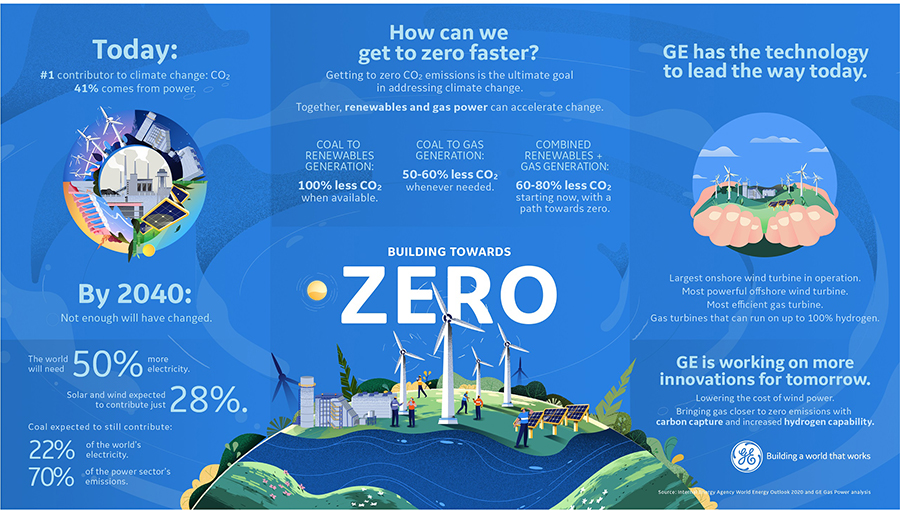By Nabil Habayeb
The ambitious goals announced and reaffirmed at summits such as the Regional Climate Dialogue, the Leaders Summit on Climate and others, reflect the growing consensus that we are at a critical moment of action. Across the globe, governments, individuals, and companies are taking tangible steps to confront the unprecedented crisis that climate change represents. That is good news.
And yet, our ability to overcome this challenge and achieve the results we so urgently need will not happen only through events such as these, nor during government policy meetings, or in corporate boardrooms. While these are essential to alignment and making commitments, the action to achieve these goals will happen in the local markets.
Where the rubber hits the road
Success actually occurs “where the rubber hits the road” – in the homes, factories, industrial facilities, power plants, and office buildings where sustainable, low- and zero-carbon technologies, systems, and practices are deployed. This needs to happen in a diverse array of geographies, climates, demographics, and economies.
Some countries are densely populated; others have vast uninhabited areas. Some regions get all their water from desalination and require constant air conditioning for brutal summers; others have rivers that run full year-round, and their major concern is heating during freezing winters.
These different conditions not only impact each country’s response to climate change, but also how they approach the broader “energy trilemma.” This trilemma reflects the challenge countries face to address sustainability, while at the same time balancing their needs in two other critical areas: energy equity (often related to affordability), and energy security and reliability.
Even as the world rallies around the need for concerted action, the path taken by each country and community will look different. What that means, quite simply, is that effective climate action – particularly in the context of the energy trilemma – will need extensive localization. This local approach requires technology and an understanding of the local environment and market.
That is why at this moment of action, we will build on our work with customers and governments across the globe and support the execution of the commitments outlined to move further and faster toward a more sustainable future. We must look forward to the future with new paradigms and technologies, alongside customers, governments, and partners.
Reimagining tomorrow’s technologies
We bring proven technologies that will support customers in taking steps today, while our ongoing research and development – with an annual spend of US$1.5 billion on energy related R&D – will deliver the new technologies they require in the years ahead.
Already, our gas turbines can run on fuels that blend natural gas with hydrogen, resulting in lower CO2 emissions. Ongoing innovation means that many of our turbines can transition to run on 100 percent hydrogen. This is a major milestone, as gas turbines fueled by hydrogen will unlock an era of lower carbon dispatchable electricity, providing a necessary backstop to the intermittency of renewable power. In the renewables sector, we have some of the largest, most efficient turbines in the world. Our hardware and software for the electrical grid helps ensure electricity is delivered efficiently and reliably to consumers.
In aviation, we are continuing to improve engine performance for greater fuel efficiency. Longer term, we are trialing sustainable airline fuels, and we are exploring electrically driven propulsion systems that reimagine the aircraft engine.
Supporting the energy transition
Across the Middle East and North Africa, there is a strong focus on cutting down carbon emissions and diversifying the energy mix.
With the goal of building one of the world’s most efficient energy systems, Saudi Arabia plans to diversify its energy mix to generate half of its electricity from renewable sources by 2030. During its G20 presidency in 2020, the Kingdom advocated the need to adopt a circular carbon economy and launched the Green Saudi Initiative and the Green Middle East Initiative to reduce carbon emissions in the region by more than 10 per cent of current global contributions.
In the UAE, diversification is also key to progress. By 2050, the country aims to have an energy mix that includes 44 percent renewables and 38 percent natural gas. GE is providing its record-breaking H-class gas turbine technology for a power plant that is expected to be the most efficient in the Middle East’s utility sector. We also have provided solar technologies for what will be the largest single-site solar energy project in the world.
Ultimately, our success as a global community in pursuing a low-carbon future requires steps now, across the entire value chain and around the world. The commitments announced and reaffirmed by world leaders give us the direction and inspiration we need.
For those of us who operate in the plants, facilities, and systems where decarbonization happens, our task is to translate these global and national commitments into the local implementations that will lead us to a sustainable, low-carbon future.
Nabil Habayeb is Senior Vice President of GE and President & CEO of GE International Markets.



